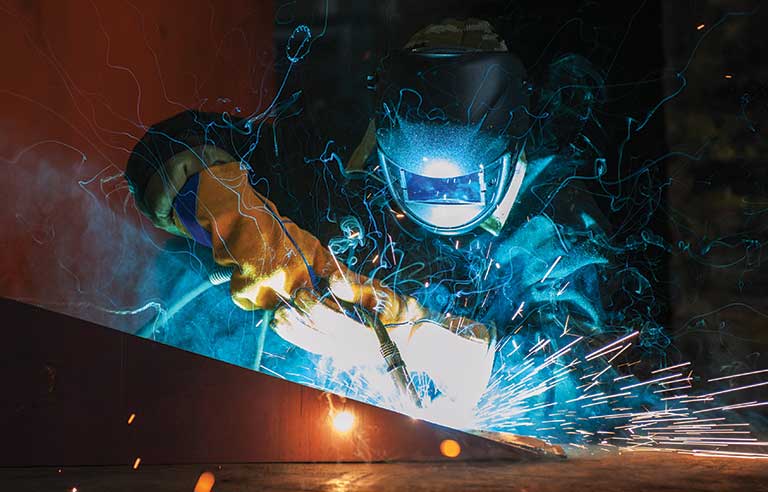2020-01-26 | Safety+Health Magazine: Welding work brings hazards. Avoiding them requires training, expertise, skill and mindfulness from employers and workers – along with a systematic approach to safety.
“People need to recognize that not everybody can go and do any welding,” said Namir George, senior safety consultant at the National Safety Council. “You’ve got to be trained. You’ve got to be competent and capable. You need to know exactly what you’re doing.”

3 comments:
Although this article is more specifically aimed at people who weld all day everyday, these hazards are still present is our shop working environments. It’s an excellent start that the welding room is by itself, but in practical terms, welding has to happen on the shop floor if any sizeable scenery is actually going to be built. There aren’t a lot of hazards in the metal shop, but the shop floor is full of sawdust, which is quite flammable. All these rules are great, but they get swept under the rug periodically. My understanding is that the shop has pretty good ventilation. The scene shop is big, and the metal shop is small, but I believe it has adequate ventilation. A lot of these problems are also chronic, and come from years and years of bending over to pick a tool up off the floor, or breathing in toxic gases. Luckily we don’t have that problem, but they are certainly issues to be aware of.
In hindsight, reading this article while I am taking a welding class was a nice refresher on the hazards we covered in class. I completely agree with Owen when he says that the article is particularly geared to career fabricators who are welding 8 to 12 hours a day 5 days a week. I do have some MIG welding experience and have experienced some of these workplace hazards. Fires happen whenever you are welding and what makes them the most dangerous, in my opinion, is the fact that you cannot always see them because of your welding hood. Additionally, flash burn is something that I have had to deal with on a number of occasions and while I am not too concerned about the permanent damage because of the infrequency that I am welding, it is still an incredibly uncomfortable feeling that, ideally, would be avoided at all cost. When it comes to fumes, I believe that they are the most dangerous hazard. The thought of inhaling vaporized metal is not something that could be justifiably safe especially with the carcinogens that the oil that coats metal contains.
Agreeing with everything above, I certainly think many of the topics in this article are applicable, even the ones listed as 'long-term hazards'. I think an additional problem in our business that compounds the hazards of welding is how hasty we work. If we can somehow justify cutting corners, then we do. As Gabe mentioned above, with the coatings that are put on steel, if we don't properly clean and prep our workpiece, not only do we form poor joints but also produce even worse fumes than what industry welders experience. Additionally, rushing the process leads to an increased chance we will hurt ourselves in other ways. Oddly enough, I did not check the sensitivity on a welding mask one time, only to discover it was set to grinding mode. If I was careful, I would have not only checked that setting, but also appropriately adjusted the type of work I was doing. I think we all can take something from this article, even though we aren't career welders.
Post a Comment